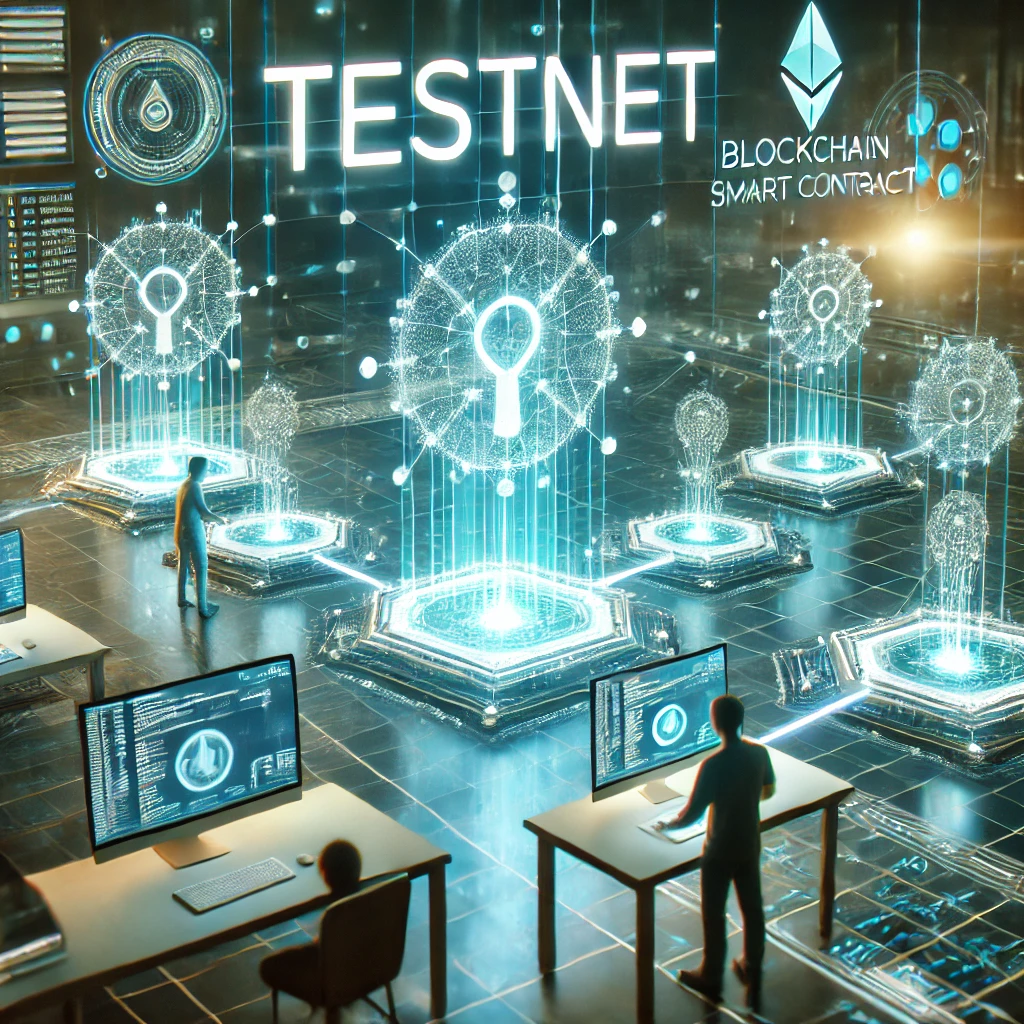Table of Contents
Introduction
Blockchain technology has revolutionized industries by providing decentralization, security, and transparency. However, building and deploying blockchain applications come with challenges, such as security vulnerabilities, scalability issues, and unpredictable network behavior. To mitigate these risks, developers utilize testnets, which serve as a sandbox environment for testing before launching on the mainnet.
Testnets are crucial for blockchain innovation, allowing developers to experiment, troubleshoot, and optimize protocols and smart contracts without financial risks. This article explores the significance of testnets, their types, benefits, challenges, and future prospects in blockchain development.
What Is a Testnet?
A testnet (test network) is a blockchain network used for testing and development. It mimics the functionality of a mainnet but operates with valueless tokens, ensuring that developers can experiment without financial consequences.
Key Differences Between Testnets and Mainnets:
| Feature | Testnet | Mainnet |
|---|---|---|
| Purpose | Testing, development, and debugging | Live transactions and real asset transfers |
| Transaction Costs | Free or minimal using test tokens | Real gas fees or transaction costs |
| Security | Lower security, experimental | High security, fully decentralized |
| Performance | Can be reset or modified | Permanent and immutable |
Testnets provide a controlled environment where developers can identify vulnerabilities, test features, and optimize network performance before transitioning to the mainnet.
The Different Types of Testnets
Testnets can be classified into public and private testnets, depending on accessibility and use cases.
Public Testnets
These testnets are open to developers, validators, and users worldwide. They closely resemble mainnets and help test real-world scenarios. Examples include:
- Ethereum Goerli & Sepolia Testnets – Used for Ethereum smart contract testing.
- Bitcoin Testnet – A sandbox for Bitcoin applications.
- Solana Devnet – Supports Solana-based projects in testing phases.
Private Testnets
Private testnets are restricted environments, often used by organizations for internal testing. They allow developers to test without external interference before launching publicly.
When to Use Each Type
- Public Testnets: Ideal for testing decentralized applications (dApps) and protocols before mainnet deployment.
- Private Testnets: Suitable for testing proprietary blockchain networks, enterprise applications, and confidential projects.
How Testnets Benefit Blockchain Development
Testnets play a vital role in blockchain development by providing a risk-free environment for:
Risk-Free Experimentation
Developers can freely test new features, algorithms, and consensus mechanisms without worrying about financial loss.
Smart Contract Testing
Before deploying smart contracts on the mainnet, developers use testnets to verify contract logic, security, and efficiency. This helps prevent costly bugs and vulnerabilities.
Simulating Network Conditions
Testnets enable stress testing under different conditions, such as high transaction volumes, network congestion, and simulated attacks.
Ensuring Compliance and Preventing Costly Errors
Regulatory requirements often necessitate thorough testing. Testnets allow teams to demonstrate security and compliance before deployment.
Real-World Use Cases of Testnets
Testnets are essential for various blockchain projects, including:
DeFi Protocols
Decentralized finance (DeFi) projects like Uniswap and Aave test liquidity pools, lending protocols, and automated market makers (AMMs) in testnet environments.
NFT Projects
NFT platforms ensure that minting, metadata storage, and marketplace functions work seamlessly before launching publicly.
Layer 2 Scaling Solutions
Layer 2 solutions such as Optimism and Arbitrum use testnets to verify interoperability and transaction finality before scaling Ethereum.
Governance and Consensus Mechanisms
Projects experimenting with governance models, such as DAOs, use testnets to refine voting mechanisms and proposal execution.
Challenges and Limitations of Testnets
Despite their benefits, testnets come with certain limitations:
Differences Between Testnet and Mainnet Behavior
Testnets may not perfectly simulate mainnet conditions, leading to discrepancies in performance and gas fees.
Centralization Risks
Some testnets rely on a limited number of validators, reducing decentralization compared to mainnets.
Limited Incentives for Participants
Since testnet tokens lack real-world value, network participation is often lower than in mainnet environments.
The Future of Testnets in Blockchain Development
With blockchain technology evolving rapidly, testnets will continue to play a critical role in innovation. Emerging trends include:
AI-Driven and Automated Testing
Artificial intelligence (AI) is being integrated into testnets to automate smart contract testing and detect vulnerabilities faster.
The Rise of Permanent Testnets
Unlike temporary testnets that reset periodically, permanent testnets offer ongoing environments for long-term testing and development.
Developer Sandboxes
New blockchain ecosystems are creating developer sandboxes where testnets provide real-world-like conditions with better incentives for testers.
Testnets are a cornerstone of blockchain development, enabling risk-free experimentation, security validation, and network optimization. Developers can leverage testnets to refine protocols, enhance security, and ensure smooth deployments on the mainnet.
By understanding the role of testnets and integrating them into development workflows, blockchain projects can achieve greater efficiency, security, and innovation. As the blockchain space continues to evolve, testnets will remain indispensable in driving the next wave of decentralized technology advancements.















